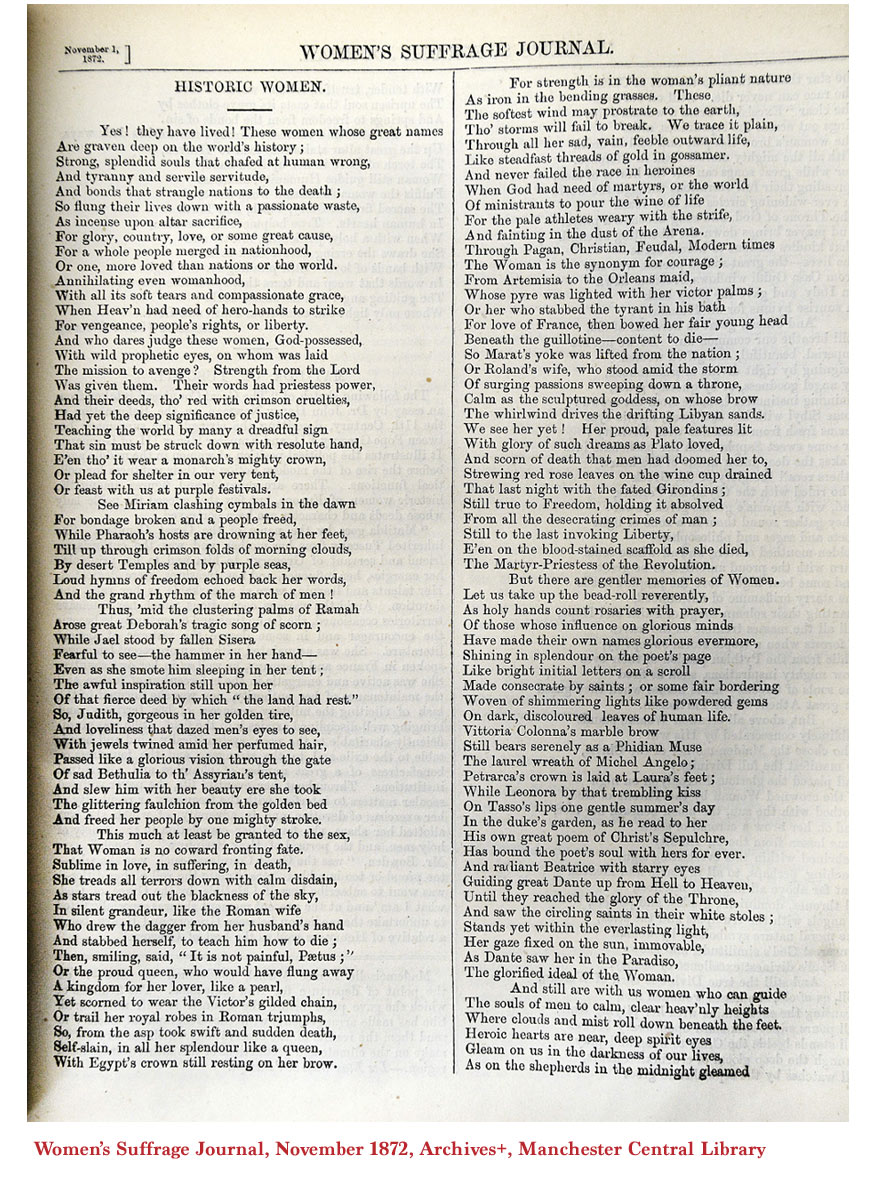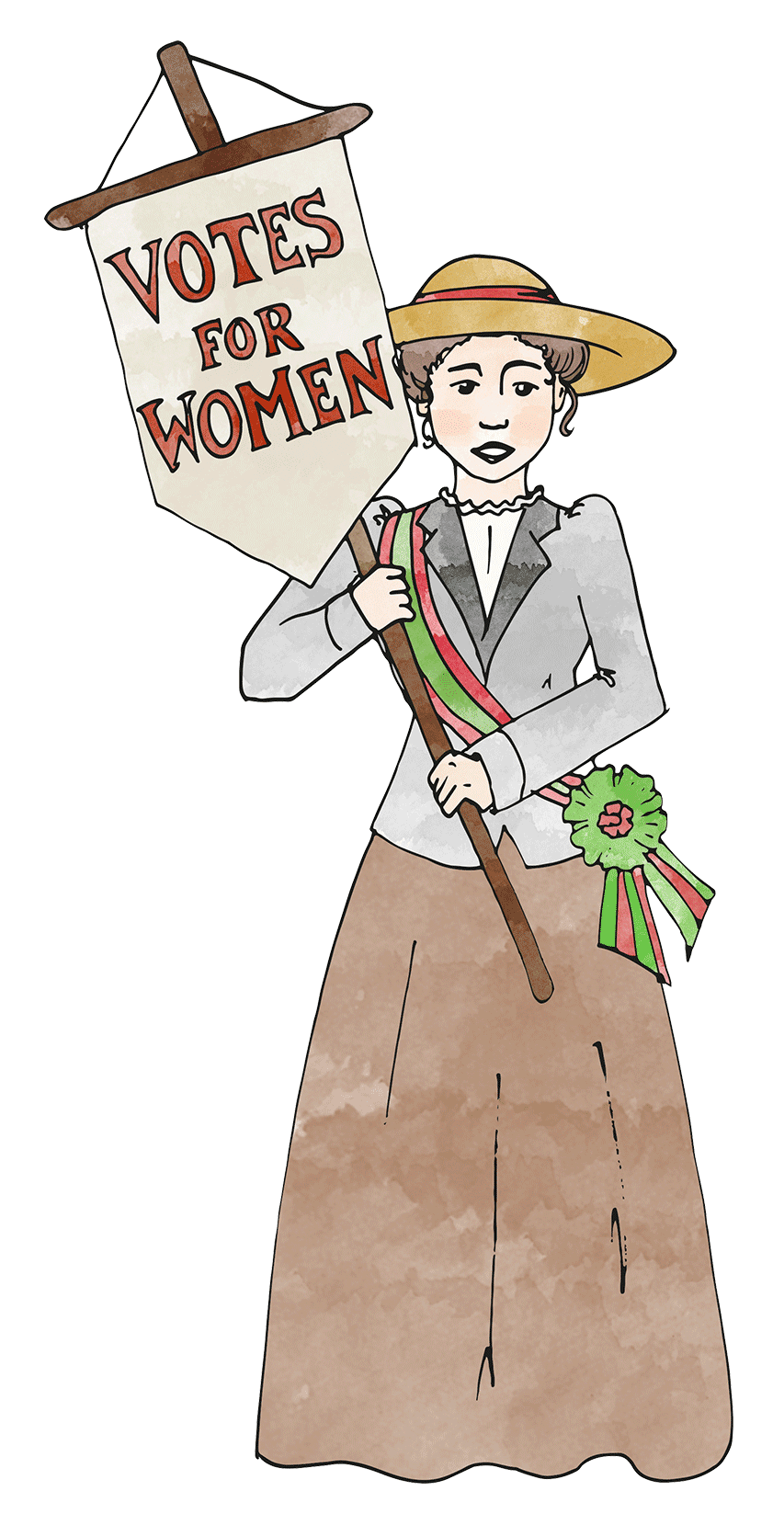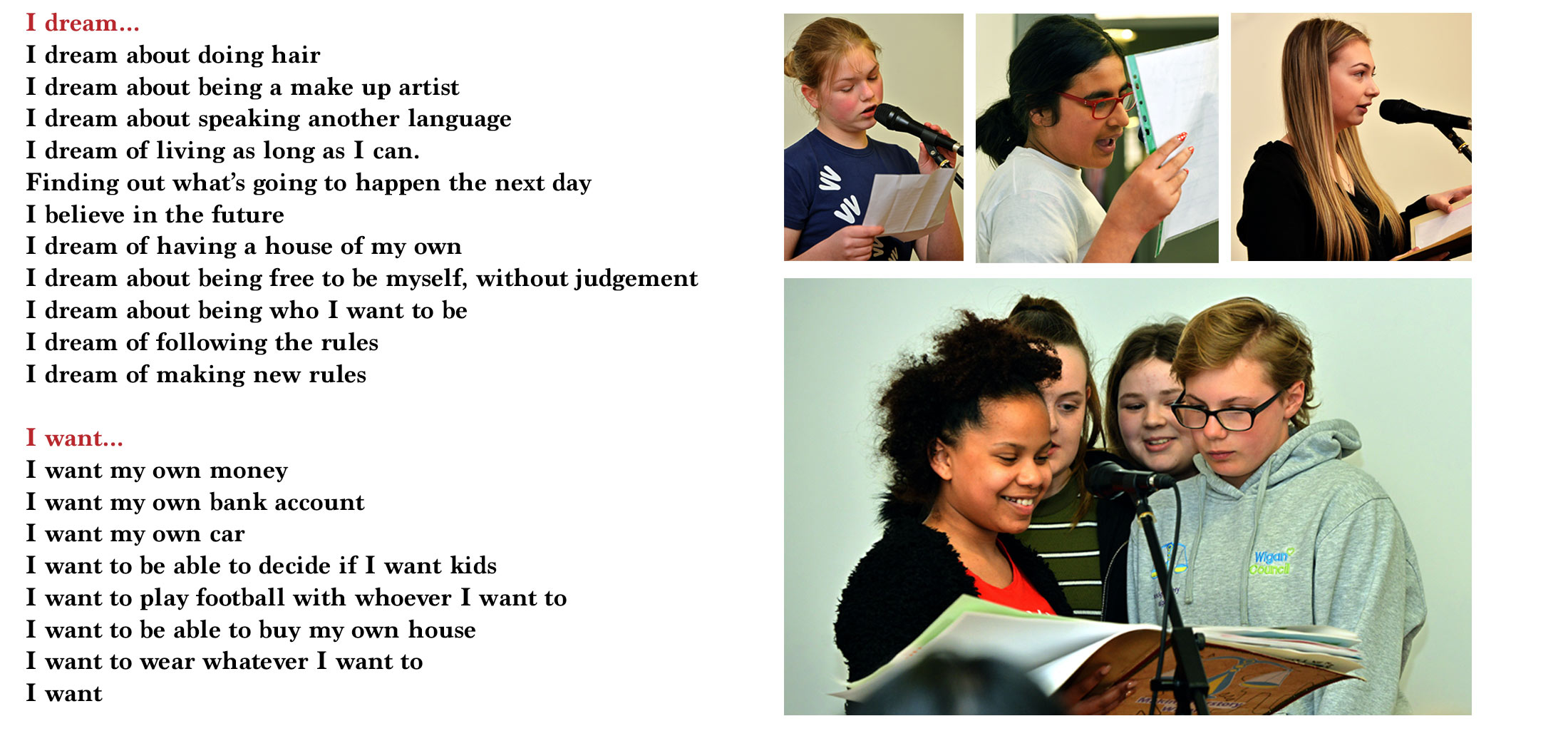
Poetry
The arts in the early 1900s were still dominated by men. It was rare for arts educational establishments to accept women on to their courses despite the achievements of women in all areas of the arts, novelists (e.g. The Bronte sisters), painters (e.g. Sophie Anderson) and musicians/composers (e.g. Rebecca Clarke).
It would not be until the 1920s, after some women had been awarded the vote that the first women graduated from the Royal Academy of Art, and from the Oxford and Cambridge Universities. If women were not creating art, it was inevitable the arts would not reflect their voices especially in regards to equality. To the Suffragists, however, the arts could be used as a tool to promote their cause. The Game Changer groups explored key art forms such as visual arts, poetry and music and not only how the suffragists used these to campaign but how they could still be used today in fighting for equality.
Poetry was an important element of the Suffragists campaigning. This especially applied to Eva Gore Booth, herself a poet who’s poem ‘The Anti-Suffragist’ explored the justification of women who were against the suffrage movement.

In the Women’s Suffrage Journal they feature a poem called ‘An Historic Woman’ that covers how women’s strength has been the backbone of society.
These examples show how poetry could be used to undermine critics of women’s suffrage as well as promote the need for equality.
The Game Changer groups worked with poets Keisha Thompson and Cheryl Martin, spoken word artists, actors and performers, to create their own poetry. They focused on issues of equality, their dreams and aspirations.
At the Game Changers Bazaar, the young people read poems written by Eva Gore Booth and work that they had written themselves.

